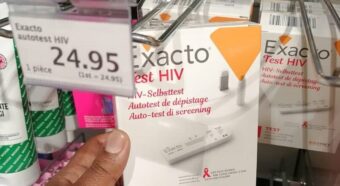The Global Fund procurement of sub-standard Long-Lasting Insecticidal Nets calls it and African countries to step up mosquito nets manufacturing and quality assurance for health commodities
- April 6, 2021
- Non classé
- By Armelle Nyobe
The manufacturer of the faulty LLINS, TANA industries and its affiliate HSDN in Pakistan used “unapproved manufacturing methods” under-dosed insecticides and later tried to cover up this non-conformity. These findings are the astonishing result of an investigation of the Office of the Inspector General of the Global Fund into Tana netting.
LLINs prevent mosquito bites that cause malaria by two actions. First, the nets are mechanical barriers that protect the person under them; second, the mosquitoes are “knocked down” and killed when in contact with the insecticide. This double action is possible through a manufacturing process that binds the insecticide within the fibres of the net and is ‘slow released’ over a 4 to 5 years period. Hence the terminology of ’long lasting’, according to the Against Malaria Foundation. TANA netting failed to follow this manufacturing process properly, thus reducing the life span of the net. The Global Fund targets for LLINs use children under the age of 5, pregnant women and the elderly.
This manufacturing debacle and attempted cover-up call for the Global Fund Secretariat and African Constituencies, where more than 94% of malaria cases occurred in 2020, to look critically into three issues: its procurements and market-shaping for health commodities as well as quality assurance.
The Global Fund Procurement of health commodities
For efficiency and risk reduction, the Global Fund Secretariat centralizes countries’ orders and purchases health commodities funded through its grants via the Pooled Procurement Mechanism (PPM). These purchases account for 50% of the Global supply of LLINs, according to the Global Fund Secretariat. Another 9% of the world supply of LLINs are paid for by the Global Fund grants but not through PPM. Rather, some countries use their national procurement mechanisms. The Secretariat has also developed a purchasing platform called Wambo.org where countries can use their domestic resources and those availed by the Global Fund to purchase health commodities. LLINs are purchased from six countries, mainly outside Africa.
African government implementers, who are the largest consumers of LLINs, appear to have little say in purchasing health commodities through the PPM. This function has been mainly outsourced to the Global Fund and its Procurement Services Agent (PSA); the LLINs are mainly produced and imported from Asia. Also, African governments appear to conduct little quality assurance or other post-market surveillance of the LLINs received. This double renunciation leaves African populations at risk of malaria vulnerable in case of a disruption of the supply chain or delivery of poor quality commodities.

Figure 1: Global Fund purchasing mechanisms
Source: Global Fund Secretariat Long-lasting Insecticidal Nets Supplier & Partner Consultative Meeting 26 September 2019 Singapore
Note PSA: Procurement Service Agent; PR: Principal Recipient; GDF Global Drug Facility mainly for TB drugs, UNICEF and UNDP are United Nations agencies
Four responsible procurement features
The Global Fund described four responsible procurement features in Figure 2. They are the additional economic benefits to the producer country; the mitigation of the environmental impact along the end-to-end supply chain; the promotion of human rights in the society like the right of the workers and the children; and the promotion of the best business practices.
Those are features that will be beneficial to African countries as well. While millions of mosquito nets translated into millions of lives saved are an outcome to celebrate, producing more of those nets in Africa can help mitigate the risks of poor quality as well.

Figure 2: Responsible procurement features of the Global Fund market-shaping work
Source: Global Fund Secretariat Long-lasting Insecticidal Nets Supplier & Partner Consultative Meeting 26 September 2019 Singapore
The COVID-19 pandemic has exposed the dangers of over-reliance on external and long supply chains, as countries limited exportations or prioritized their other health commodities needs. Several African manufacturers started producing personal protective equipment in response to the new needs and purchasers’ guarantee. There is little doubt that should the Global Fund decide to source some of its LLINs from Africa, local manufacturers can rise to the challenges.
Quality Assurance
The issue of poor quality of million LLINs indicates the Global Fund’s systemic failure to assure the quality of its orders for two years and the equivalent failure of the implementing governments in 21 countries to control the received shipments’ quality. It will be important for African countries to develop national or regional infrastructure to check the quality of health commodities purchased or received through aid. Only such quality assurance will remove doubt on the quality of other health commodities like diagnostic tests or medicines.
Reference
Office of the Inspector General TANA Netting – Procurement of Sub-standard Long-Lasting Insecticidal Nets GF-OIG-21-001, 26 February 2021, Geneva, Switzerland
Global Fund Secretariat: Long-lasting Insecticidal Nets Supplier & Partner Consultative Meeting 26 September 2019 Singapore
By Djesika Amendah


